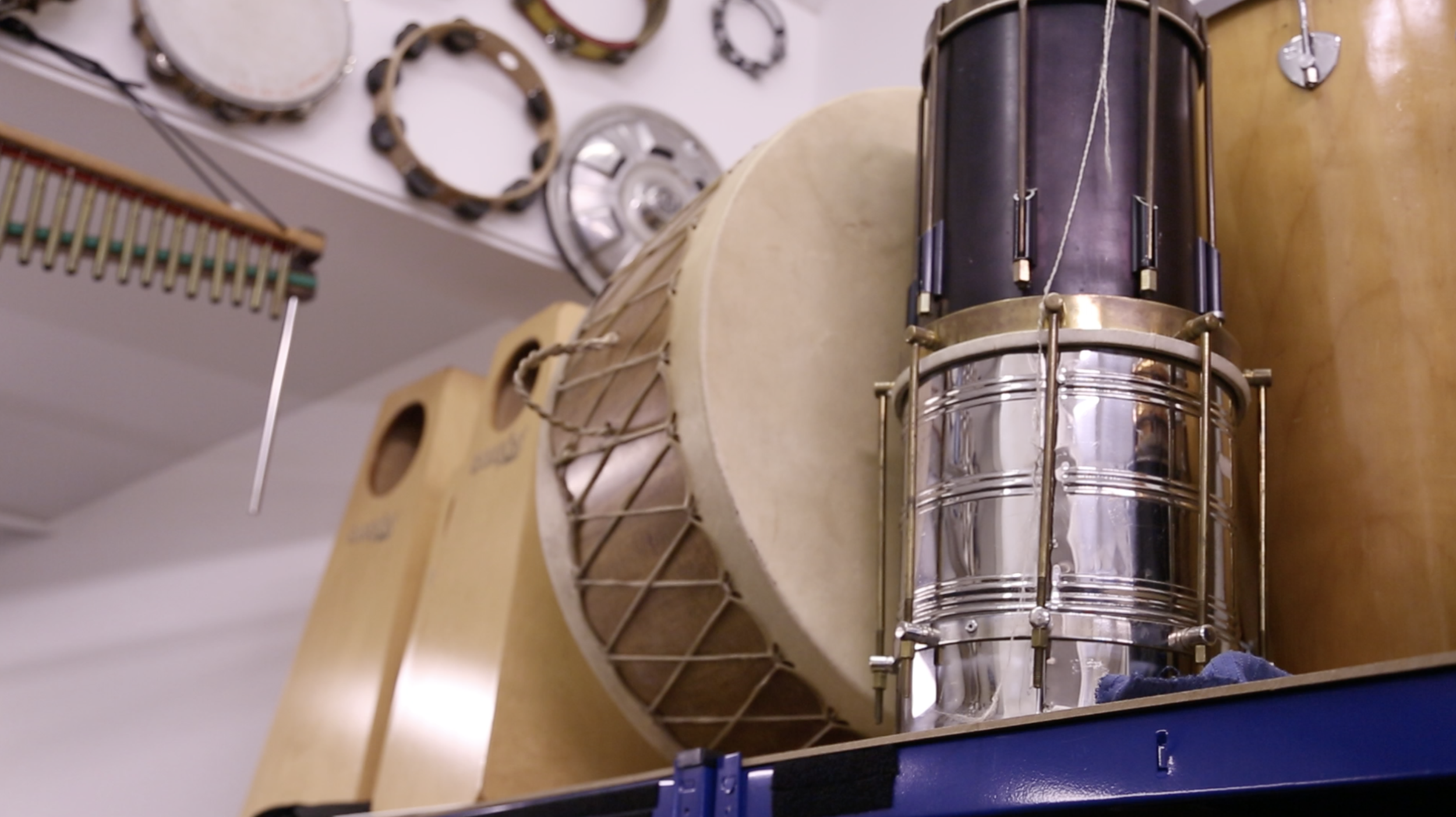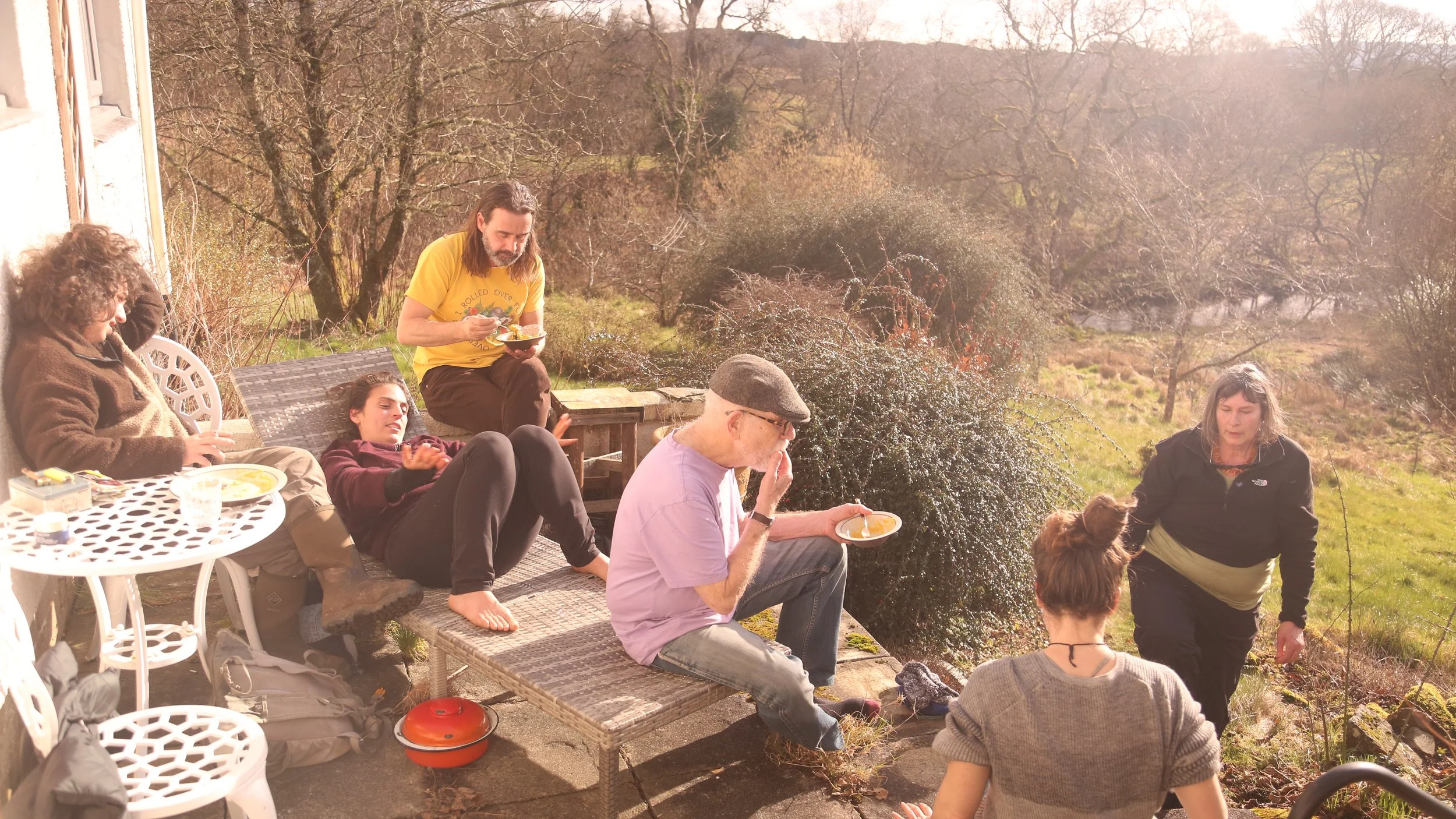A REQUEST FOR CREATIVE PARTNERSHIPS:
In searching for a future home for the Steve Forman Percussion Collection - we’ve developed a growing interest in potentially building more ;
We can see a collaborative ‘Percussion Space’ - envisioned as a hybrid percussion research laboratory and an interdisciplinary art residency - built from the extraordinary creative resource of the Steve Forman Collection.
The Steve Forman Collection (aka the Glasgow Percussion Collection) is a rich reflection of a lifetime spent making eclectic music of every possible genre - with an ethnomusicological interest in the rhythms and sonic textures of every corner of the globe.
Though it is deep in Afro-Latin and classical orchestral percussion, it’s breadth is an astounding and eclectic storehouse of unusual world textures, vintage sound effects, endless hand percussions, toy instruments, found objects and original instruments by other musicians, as well as a large quantity of inventive scrapyard instruments by Steve Forman himself, including the L.A. river-sourced ‘Mazdaphone’, a reco-reco sprung from a hubcap.
As an expansive percussion collection numbering close to 1000 instruments; the Steve Forman Collection is an unparalleled resource for musicians, interdisciplinary artists and researchers.
Steve built out this instrument collection during decades of work as a session-musician and specialty composer in Los Angeles; during travels in Brazil and through a rich community of musical collaborators in latin jazz, rock and jazz fusion groups. The instruments in the collection point to a counter-cartography of sound — tracing rhythmic through-lines of interconnected diasporas, particularly the Indigenous, European and African diasporic musics of the Caribbean, Brazil and throughout the Americas.
Later in life, his passion for the polyrhythmic potential of the Celtic Bodhrán led him to his current home in Glasgow, Scotland, where he began composing new music and developing a pedagogical framework around ‘Rhythm Theory’, based upon his doctoral work in somatic pulse-relational theory, which he taught for years to musicians at the Royal College of Music.
Steve has devoted his life to exploring the infinite possibilities of percussion; Devotion to finding pulse and polyrhythmic groove where it lives, inside every body — Devoted to playing always for dancers — To putting one foot down in front of the other — To coaxing new sounds out of everyday life — To the collective spark, implicit in the present-tense of improvised music — and to all the spirits that are shaken from the vibrant matter of drums, rattles, wind-gongs, devil chasers, ceremonial bells and hubcaps.
Our loose vision for a ‘Percussion Space’ includes:
The Steve Forman Instrument Collection: Would be housed, ideally in an inviting, accessible space with great acoustics, humidity control, recording capabilities and space for intimate, kinetic collaboration.
A Music and Interdisciplinary Art Residency: Would host a rotating cohort of experimental musicians of all traditions, musicologists, research-based arts practitioners, new music composers, sound artists, dancers, somatic movement practitioners, jazz musicians, free improvisers, sculptors and instrument builders, among others.
A ‘Rhythm Theory’ Research Lab: To accompany the instruments; a library dedicated to Percussion and Rhythm Studies, as well as other pedagogical resources. Interdisciplinary research could feed into live musical events and other curatorial programming — possibly led by an annual ‘Percussion Space’ Curatorial Fellow who might weave community and critical conversations into the life of the Laboratory.
We are currently seeking collaborative support:
To Partner with aligned institutions who may be excited about re-homing the collection (and potentially building more with the interdisciplinary resource…)
To Find collaborators who may be interested in building an freestanding non-profit percussion sanctuary.
Our fundraising and outreach effort is currently looking towards either potential outcome, or perhaps a combination of the two. Both would entail, at a minimum, the packing and relocation of the collection (currently housed in Glasgow), as well as any other potential capital expenses and possible program support.

An incomplete
Inventory of the thousand or so instruments in
The Steve Forman Percussion Collection


